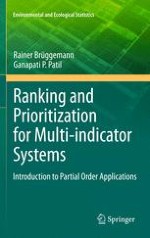2011 | OriginalPaper | Buchkapitel
8. Formal Concept Analysis
verfasst von : Rainer Brüggemann, Ganapati P. Patil
Erschienen in: Ranking and Prioritization for Multi-indicator Systems
Verlag: Springer New York
Aktivieren Sie unsere intelligente Suche, um passende Fachinhalte oder Patente zu finden.
Wählen Sie Textabschnitte aus um mit Künstlicher Intelligenz passenden Patente zu finden. powered by
Markieren Sie Textabschnitte, um KI-gestützt weitere passende Inhalte zu finden. powered by
